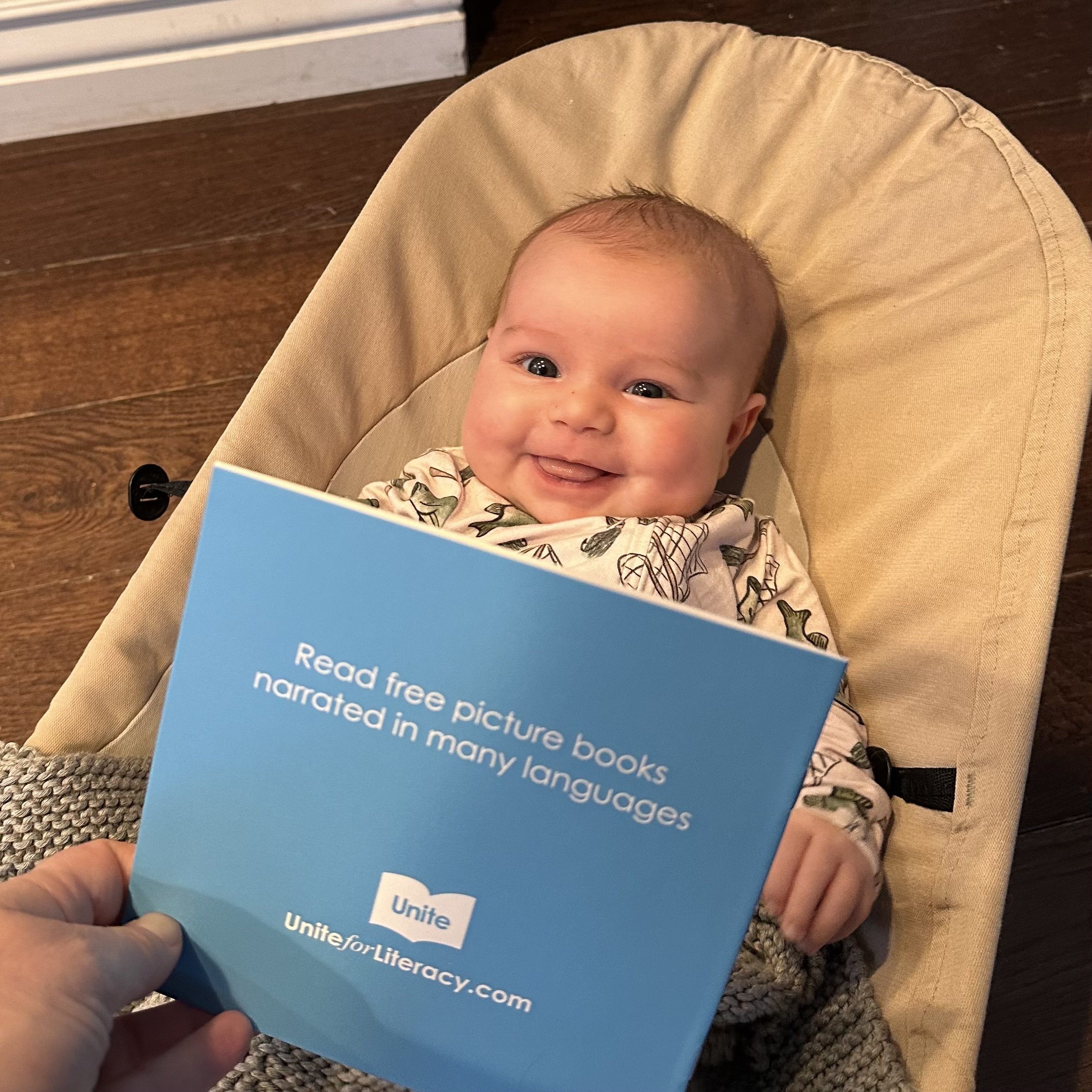Baby Book Talks
By Mark W.F. Condon, Unite for Literacy vice president
Language is the most powerful tool we have for learning, building and managing our lives. We use our language to communicate, as well as to think.
For the last five months in utero, a child in the womb can hear their mother’s, father’s, and others’ voices as they converse with family members, friends and neighbors. They also can hear music, the family dog barking and other environmental noises.
After birth, language lands on baby ears like so much other noise. We sometimes forget that although babies work tirelessly to do something ever so basic, like holding their head up, they are nonetheless taking in all that is around them, using sights, sounds and interactions to make sense of their world.
As infants grow each day and their family includes them in their conversations, little ones begin to discern that the noises they hear and the noises they make, along with physical touch and facial expressions, provide significant pathways to lifelong vocal connections with others. So, it’s critical that babies hear and see people talking to them and to one another.
Infant language becomes dramatically more powerful when books are added to their lives. The language found in books is much richer and more elaborate than the typical language shared around the house or during meals. Even very simple books, with relatively short sentences and non-technical vocabulary offer more complex language than daily household chat.
Extending babies’ understandings through books is simple to do. As a loving family member reads a picture book aloud to their 16-month-old, the baby’s eyes are mostly on the colorful illustrations while the reader runs their finger under the text. Asking engaging questions, like “Do you see the yellow duck?,” further enhances the language experience for the youngster. Before long, we hear young children “reading” books (from memory) and weaving phrases from their books into their lives in interesting ways. Take this example of the latter shared with me by a friend:
The Three Little Pigs is one of 3-year-old Adam’s favorite books. One day, while waiting for his grandpa to finish up in the bathroom, Adam rapped on the door and called, “Grandpa, Grandpa, let me come in…or I’ll huff, and I’ll puff, and I’ll blow your house in!”
“Not by the hair of my chinny chin chin,” laughed Grandpa, continuing the language from the book that he and Adam had shared so many times.
If you’re new to selecting books for reading with wee ones, developing relationships with local librarians and/or bookstore staff is invaluable. They’ll joyfully introduce you to young children’s favorites. The internet also is filled with lists and lists of appealing kid-tested choices.
Just as we make sure our babies have regular nutritional sustenance, we want to schedule time for reading and talking with our babies about books. Each encounter with delightful texts offers them powerful anchors for language, and thus for future success throughout school and on into life.
